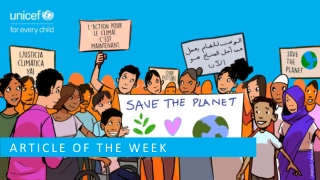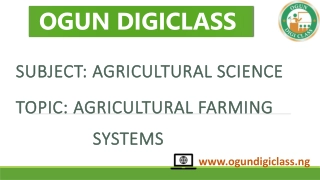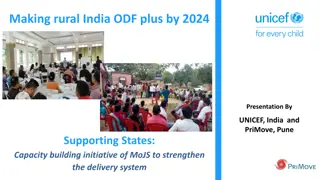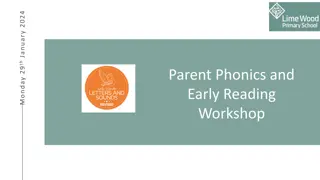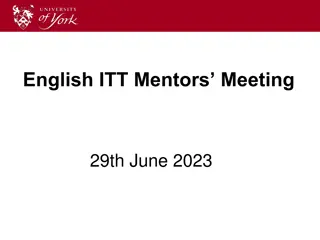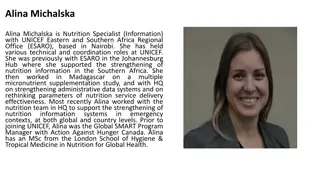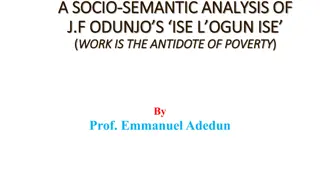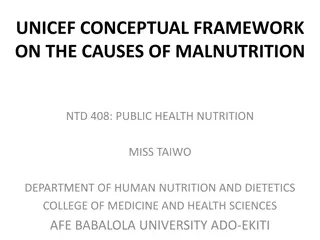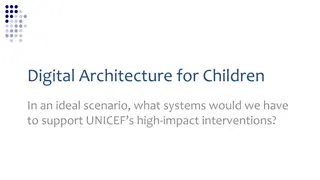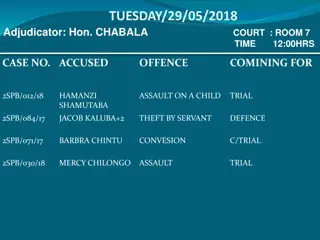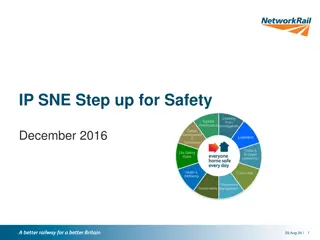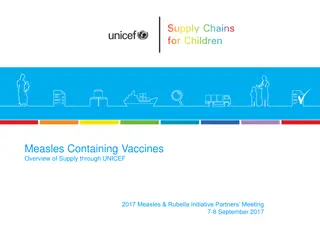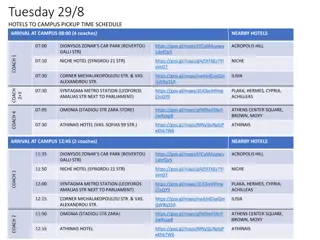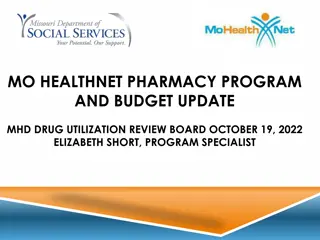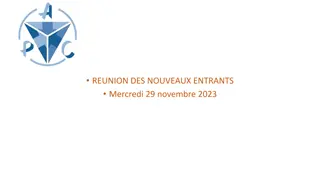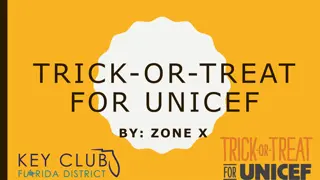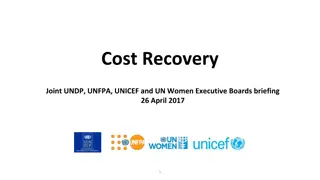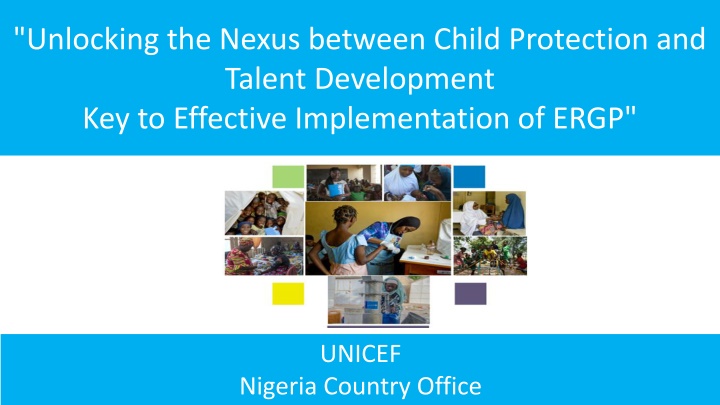
Unlocking the Nexus between Child Protection and Talent Development for Sustainable Growth
Discover how the Economic Recovery and Growth Plan (ERGP) in Nigeria aims to invest in human development, protect children, and promote economic prosperity by leveraging the country's potential. The plan focuses on social inclusion, job creation, and building the capabilities of the youth to secure a better future.
Download Presentation

Please find below an Image/Link to download the presentation.
The content on the website is provided AS IS for your information and personal use only. It may not be sold, licensed, or shared on other websites without obtaining consent from the author. If you encounter any issues during the download, it is possible that the publisher has removed the file from their server.
You are allowed to download the files provided on this website for personal or commercial use, subject to the condition that they are used lawfully. All files are the property of their respective owners.
The content on the website is provided AS IS for your information and personal use only. It may not be sold, licensed, or shared on other websites without obtaining consent from the author.
E N D
Presentation Transcript
"Unlocking the Nexus between Child Protection and Talent Development Key to Effective Implementation of ERGP" UNICEF Nigeria Country Office August 2018
ERGP & Human Development Nigeria has the potential to become a major player in the global economy by virtue of its human and natural resource endowment The VISION is one of sustained inclusive growth It also provides a blueprint for the type of foundation that needs to be laid for future generations and focuses on building the capabilities of the youth of Nigeria to be able to take the country into the future Opening line of the ERGP
Investing in People Investing in our people: economic growth is beneficial for society when it creates opportunities and provides support to the vulnerable The plan will invest in the Nigerian people by increasing social inclusion, creating jobs and improving the human capital base of the economy Page 12
ERGP & Human Development The ERGP will contribute to achieving the national aspirations and vision set out in the 1999 Constitution by seeking to promote national prosperity and an efficient, dynamic and self-reliant economy to secure the maximum benefit, freedom and happiness of every citizen on the basis of social justice and equality of status and opportunity. To this end, the plan has three broad objectives Restoring growth Investing in our people Building a globally competitive economy
VAC, SDGs and Economic Development Health SDG 3 Economic Growth & Development SDGs 1,8,10 Violence against Children SDG Targets 5.2 &16.2 Human Capital Most SDGs Education SDG 4
Understanding Violence Against Children The Federal Ministry of Women Affairs and Social Development, Budget & Economic Planning have undertaken three major pieces of work: National Violence Against Children Study (UNICEF; CDC; US President's Emergency Fund for AIDS Relief (PEPFAR) and European Union) The Economic Burden of Violence against Children in Nigeria: Analysis of Selected Health and Education Outcomes (Ministry of Budget & Economic Planning and Ministry of Women Affairs and Social Development). A Financial Benchmark for Child Protection (Ministry of Budget & Economic Planning and Ministry of Women Affairs and Social Development)
Prevalence of VAC in Nigeria What is so shocking is that the perpetrators of this abuse and violence are, in most cases, known to the children experiencing the violence they are parents, guardians, family members and others in children s lives. And the violence happens in places where children are supposed to be protected - in their communities, schools and religious institutions. And it is for this reason that: Less than half of all children who experience physical violence tell someone about it. And for sexual violence, disclosure rates are even lower. Of those who experienced sexual or physical violence, no more than 6% sought help and less than 5% received help. In fact, only 2% of boys who experienced sexual violence received help.
Minimum Numbers of Children < 18 Years Experiencing Past-Year Sexual, Severe Physical, or Emotional Violence, 2014 > 1 Billion Children Asia Europe 15,200,000 714,600,000 North America 40,200,000 <30% 30-39% 50-59% 60-69% Africa 229,800,000 Latin America & the Caribbean 58,400,000 Oceania 640,000 Source: Hillis S, Mercy JA, Amobi A, Kress H. Global prevalence of past-year violence against children: A systematic review and minimum estimates. Pediatrics 2016;137(3): e20154079
Financing for Child Protection. Why is it important ? We find an incidence rate for child abuse and neglect that is about ten times as high as the incidence rate for all forms of cancer. There is a multi- billion dollar research base reliably renewed on an annual basis for cancer treatment and prevention. Nothing remotely similar to this exists for the prevention and response to child abuse and neglect. Frank Putnam, US National Institute for Mental Health, The Costs and consequences of Child Abuse
Impact of Child Neglect on Brain Development Excessive and repeated stress causes the release of chemicals that impair cell growth and interfere with the formation of healthy neural circuits in the brain risk of chronic diseases and disability from physical injury; Reduced health-related quality of life; and lower levels of educational achievement and adult economic well-being Increased Healthy Brain Cognitive dysfunction Toxic stress can damage the brain s stress response system and contribute to premature ageing of the body Behavioral and mental health problems; High-risk behaviors, including increased risk for delinquency; Abused Brain
National Response to VAC The strategy follows a six-step approach: 1. 2. Build evidence around the cost of VAC in Nigeria s economic and human capital Establish a baseline of public expenditure and keep track against progress and increase in allocations and release Costing of a minimum package of child protection services and development of a government 5-year budgetary incremental plan (to determine how much & where should funds be invested) Provision of technical support for budget submissions of 2019, 2020, 2021 and 2022 budget cycles and inclusion of CP in the MTEF Evidence based comprehensive advocacy at all relevant levels Monitor & Evaluation use of the benchmark. Documentation & Evaluation 3. 4. 5. 6. We have translated these into specific RWP targets and milestones In response to Presidential Commitment!
The Cost of Inaction: Economic Burden of VAC
The Economic Burden of VAC in Nigeria (2014) 1. Step one: Estimate the national prevalence of violence against children 2. Step two: Estimate violence against children relationship with selected health outcomes 3. Step three: Calculate population attributable fractions (PAFs) based on relationship between health outcomes-type of VAC and prevalence 4. Step four: Estimate economic loss multiplying the PAFs by appropriate measure of disability-adjusted life years (DALY) after converting DALYs into monetary value (1 DALY=country s per capita GDP)
The Economic Burden of VAC in Nigeria (2014) 1. The estimated economic value of DALYs lost to violence against children (including both fatal and nonfatal) in Nigeria totaled US$8.9 billion in 2014, accounting for 1.58% of the country s GDP. 2. The total loss of earnings attributable to childhood physical violence, emotional violence and sexual abuse (due to educational impairments) in Nigeria in 2014 was US $6.1 billion, accounting for 1.07% of Nigeria s GDP.
Lifetime costs of Nonfatal CM Average lifetime cost per victim of nonfatal child maltreatment $210,012 in 2010 dollars $32,648 in childhood health care costs $10,530 in adult medical costs $144,360 in productivity losses $7,728 in child welfare costs $6,747 in criminal justice costs $7,999 in special education costs Total lifetime cost approximately $124 billion, about 1% of the national GDP
Current Public Expenditure A financial benchmark for Child Protection In Nigeria
Current Expenditure on CP services Annual CP spending by government per child as a percentage of annual primary government spending per capita Child protection expenditure as collected Number of children 0-18 x 100 Primary government spending Total Population
Current Expenditure on CP services Definition of Child Protection risks and issues Agreement on list of child protection services Data source: 2014 and 2015 outturn data. Audited financial statements. The 2014 Accountant General s Report only provided aggregated budget lines. The 2015 Accountant General s Report was not available at the time of data collection. MDA Disbursement Reports MoJ, MoWASD, MoE, MoH, NPF Expenditure lines included: Salary costs, Training and capacity building, Drafting laws and policies, Institutional Management, Monitoring and Data collection, Capital Projects
Current Expenditure on CP services Est. Expenditure on CP services (CP Financial Benchmark) by Federal and State governments on average in 2014 and 2015 is estimated at 0.31%. This means that for every NGN 100 spent per person in Nigeria, 31 Kobo, or NGN 0.31, was spent per child on CP services. A 0.1% increase in expenditure would contribute to 40% in service provision at state level
Investing Adequately: Costing the Child Protection Services
Costing of the Child Protection Services Through a detailed costing: contribute to conversations around the strategy to address child protections issues and planning the implementation of policy Integrate costing into budgeting processes 4 key methods: Proposing appropriate institutional arrangements Analysing information on current expenditure on the provision of services and the cost of these services Costing of the identified institutional arrangements for managing and providing relevant services Developing options for a costed roll-out plan of the proposed institutional arrangements.
Next Steps Technical support for MDA to prepare budget submissions Support MDA with sustained advocacy advocacy pack and messages Follow up in 2019 release of funds Technical assistance and advocacy for the inclusion of child protection services in the MTEF 2020-2022 Monitor using the financial benchmark Documentation & Programme evaluation by 2022
Lessons Learnt Undertaken a comprehensive strategy from evidence to provision of technical assistance seconding consultants Ministry of Budget and National Planning leading Use of global expertise and tested methodologies Federal and state approach Building capacities during the process International coupled with national teams of consultants VACS is a tremendous asset Costing as an instrument for planning Integrating PF4CP with all programmes components- case management etc Multisectoral, phased, approach Building upon an existing political commitment and CPSS national programme
Call To Action Decision makers at all levels of government and in different relevant sectors of the economy, are urged to urgently develop and budget for interventions that will reduce the existing the tremendous economic cost, as well as the human toll and lifelong impacts associated with violence against children. Establish dedicated budget lines for eliminating the burden due to violence against children.
Call To Action Improve the outreach and quality of CP services by i) increasing the level of public expenditure and ii) targeting funding allocations to key sectors. A 0.1% shift in the budget allocation at Federal level would result in 1.3 times available expenditure for CP (or NGN 3.4 billion at this level). A small reprioritisation in total expenditure (of 0.1%) could add 63% more than existing expenditure across all levels.
Thank you

